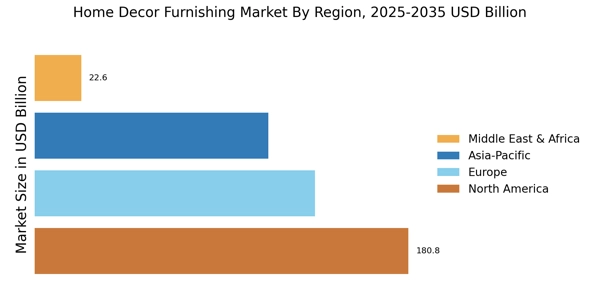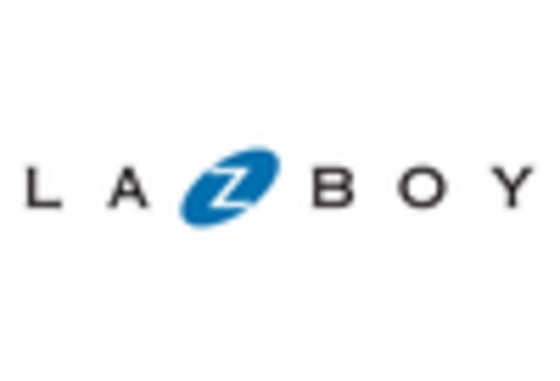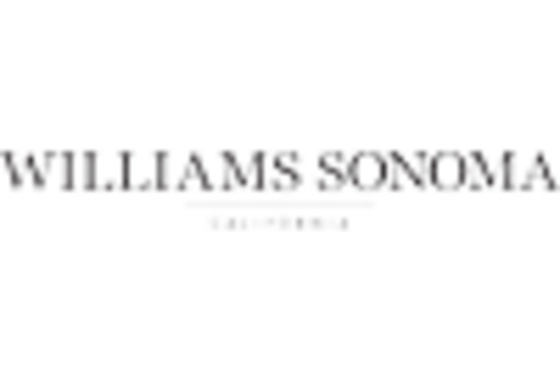The Home Decor Furnishing Market is currently characterized by a dynamic competitive landscape, driven by evolving consumer preferences and technological advancements. Major players such as IKEA (SE), Ashley Furniture Industries (US), and Williams-Sonoma (US) are strategically positioning themselves to capitalize on these trends. IKEA (SE) continues to emphasize sustainability and affordability, while Ashley Furniture Industries (US) focuses on expanding its product range through innovative designs. Williams-Sonoma (US) leverages its strong brand identity to enhance customer loyalty, particularly in the premium segment. Collectively, these strategies contribute to a competitive environment that is increasingly focused on differentiation through quality, design, and sustainability.
Key business tactics within the Home Decor Furnishing Market include localizing manufacturing and optimizing supply chains to enhance efficiency and responsiveness to market demands. The market structure appears moderately fragmented, with a mix of large, established players and smaller, niche brands. This fragmentation allows for diverse consumer choices but also intensifies competition among key players, who must continuously innovate to maintain market share.
In August 2025, IKEA (SE) announced the launch of a new line of eco-friendly furniture made from recycled materials, reflecting its commitment to sustainability. This strategic move not only aligns with global trends towards environmentally conscious consumption but also positions IKEA (SE) as a leader in sustainable home furnishings. The introduction of this product line is likely to attract a growing segment of eco-aware consumers, thereby enhancing brand loyalty and market penetration.
In September 2025, Ashley Furniture Industries (US) unveiled a partnership with a technology firm to integrate augmented reality (AR) into its online shopping experience. This initiative aims to enhance customer engagement by allowing consumers to visualize how furniture will look in their homes before making a purchase. The strategic importance of this move lies in its potential to reduce return rates and improve customer satisfaction, thereby strengthening Ashley's competitive position in the digital marketplace.
In July 2025, Williams-Sonoma (US) expanded its e-commerce capabilities by launching a new mobile app designed to streamline the shopping experience. This app incorporates AI-driven recommendations based on user preferences, which could significantly enhance customer interaction and drive sales. The strategic significance of this development is underscored by the increasing reliance on digital platforms for consumer purchases, particularly in the home decor sector.
As of October 2025, current competitive trends in the Home Decor Furnishing Market are heavily influenced by digitalization, sustainability, and the integration of artificial intelligence. Strategic alliances among companies are becoming more prevalent, as firms seek to leverage complementary strengths to enhance their market offerings. Looking ahead, competitive differentiation is likely to evolve from traditional price-based competition towards a focus on innovation, technological integration, and supply chain reliability, as companies strive to meet the demands of a more discerning consumer base.


















Leave a Comment